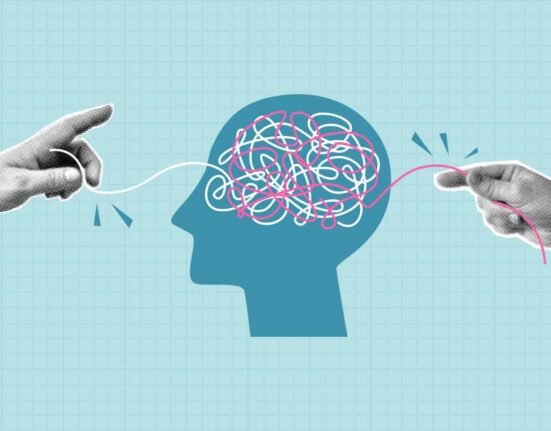“Thoughts don’t matter but your response to them does.” –Adrian Wells
Globalization has transformed the overall scenario of India where the growth of digital communication and mass media has promoted the economic status of India along with many disappointments. Among all such disappointments, one of the most important concern is about staying healthy and fit, not only physically but mentally too. Modernization and changing stressful lifestyles has increased the need for psychotherapy which is also helping psychotherapies a bit less stigmatized.
India has been using systematic psychotherapies from the western world since the early 1900s which are fairly applicable but keeping for Indian population in mind and cultural call there is a need of modifying for slightly modified treatment strategies used in psychotherapies. However, there are enough references in Hindu scriptures and Upanishads which emphasize on meditation, mindfulness and acceptance as a part of psychotherapeutic practices.
Mindfulness is about paying attention to what is salient in the present moment. It involves remembering to reorient our attention and awareness to the current experience in a wholehearted, receptive manner. This requires the intention to disentangle from our reverie and experience the moment to its maximum extent. Mindfulness is a non-elaborative, non-judgmental, present-centred awareness, focusing attention, being aware, in which thoughts, feelings, or sensations which come into attention or the awareness is acknowledged and accepted as it is. The concept of mindfulness has its origin in many cultural, contemplative and philosophical traditions such as Hinduism and Buddhism and its practice does not imply following any single specific philosophical or religious tradition. Nevertheless, mindfulness can be considered a component of such ancient practices as Vipassana meditation and Zen meditation. Mindfulness, as used in ancient texts, is an English translation of the Pali word ‘Sati’, which connotes the awareness, attention, and remembering.
Basically, mindfulness involves three qualities and three activities and these are:
(1) Observing, noticing the thought/feeling/sensation, and bringing it to the awareness.
(2) Describing, labelling, and noting it.
(3) Participating in it.
The accompanying activities are:
(1) Non-judgmentally, with acceptance, allowing
(2) Being in the present moment with a mindset of a beginner.
(3) Effectiveness.
Mindfulness is a very specific type of awareness skill in which the people learn to be a keen observer of thoughts and emotions as they arise in the mind. In this way, they establish a conscious relationship with the contents of the mind. It is an art of listening, without getting indulged in thinking about what they are experiencing or reacting to the inner feelings by wanting things to be different than what they actually are. It’s about completely being present for what is in a very direct way and watching very carefully for any tendency to react as it may take one away from that direct experience. It is exactly the same for the inner or emotional pain and this thing needs one’s care and complete attention; it needs one to listen with a mind that is completely present but not reactive. Learning to listen from the mind and to be fully present and engaged with one’s feeling is the central focus in mindfulness meditation therapy.
Mindfulness Practice Types:
Mindfulness teaches the practice of observing thoughts without getting entangled in them, approaching them as if they were the leaves which floating down the stream. It is not about replacing negative thoughts with positive ones, but rather accepting the ongoing flow of thoughts, sensations, and emotions. The practice of mindfulness involves both formal and informal meditation practices and non-meditation-based exercises.

Formal mindfulness
It is most often referred to meditation and involves intense introspection whereby one focus the attention on an object (breath, body sensations) or on whatever arises at that moment (called choiceless awareness).
Informal mindfulness
It is the application of mindful attention in an everyday situation. Mindful eating and mindful walking are examples of informal mindfulness practices. In fact, any daily activity can be the object of informal mindfulness practice.
Non-meditation-based mindfulness exercises which are specifically used in a few other therapies like dialectical behaviour therapy and acceptance and commitment therapy are:

Mindfulness and Yoga:
Two religious traditions, Hinduism and Buddhism are related to yoga. Mindfulness and yoga are directly related as many yoga practices incorporate mindfulness and vice versa. Many mindfulness meditation practices are also similar to yoga as they involve creating awareness about own body. There is a lot of overlap between mindfulness and yoga both historically and presently.
Mindfulness Meditation:
Mental training practice that involves focusing your mind on your experiences, own emotions, thoughts and sensations. It involves breathing practice, mental imagery and muscle-body relaxation in various ways. Below are some mindfulness-based meditation exercises are mentioned:
Exercise 1: Three Minutes of Mindfulness
First minute: During the first minute, try to simply notice your thoughts and feelings. One has to try to focus on and noticing their thoughts and feelings as they occur.
Second minute: During the second minute, includes awareness to physical sensations, awareness of thoughts and feelings have to be maintained.
Third minute: In the final minute, also include the space around you, awareness of thoughts and feelings have to be maintained along with the bodily sensations, noticing the room or area around. As the third minute ends, bring your attention back to your breath and slowly open your eyes.
Exercise 2: The Park Bench
Here, one has to imagine himself/herself sitting on a park bench, noticing people coming around coming closer and their behaviour, you don’t have to ask them to sit and they can only be observed. When they pass by and are no longer in the victim, let them go as you turn your attention to the next passerby. This park bench experience is an analogous exercise that can be done with thoughts, feelings, physical sensations, and observations of the space around.
Exercise 3: Mindful Breathing/Anapanasati
To practice Anapanasati, begin by taking a few deep breaths to relax. Then begin with breathing normally through the nose and paying attention to your inhalations and exhalations. One has to try to find out the place where the breath is else noticeable. This may be chest, belly, throat, the tips of nostrils, or anywhere else. It is important to follow breath as it moves in and out. Imagine as if it is cleansing the inner self. You can also try to count the breaths (1-10 and then start over) and name the inhalations by ‘In’ and exhalations by saying ‘Out’ if you are counting or naming, use them only as tools to help maintain a focus on your breathing. Do not let them become the sole object of focus.
Mindfulness-based approaches are increasingly employed as interventions for treating a variety of psychological, psychiatric and physical problems which are mostly found to be very effective in Depression, Anxiety Disorders. Such approaches include ancient Buddhist mindfulness meditations and modern group-based standardized meditations such as mindfulness-based stress reduction and mindfulness-based cognitive therapy.
Mindfulness training provides as a tool to facilitate and cultivate emotional balance and a decentered perspective has been emphasized. There have been many studies in the last decade and still going on emphasizing the positive role of Mindfulness plays in promoting good mental health. While western scientific research has validated and opened up the practice of mindfulness to the entire world, the depth of concepts is still deeply embedded in the eastern philosophy. Each of the perspectives is necessary to help in the further understanding of why mindfulness matters and what is the best way to incorporate it into our lives. Mindfulness can help in transforming one’s entire world the inside out and practising it as one can discover the incredible and wonderful surprise-the feelings of fulfilment, peace and wholeness within themselves all along












Leave feedback about this